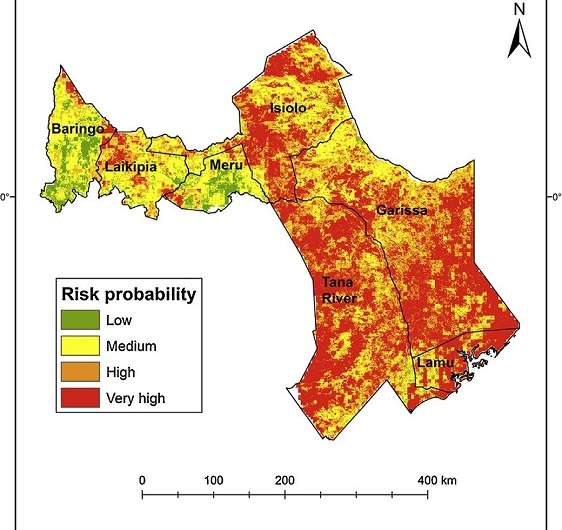Better surveillance and more cohesive policies needed against Rift Valley fever outbreaks

Research on the mosquito-borne Rift Valley fever in east Africa and the Arabian Peninsula shows that current surveillance systems are unable to detect the virus in livestock before it spreads to humans. A coherent policy is needed to combat the viral disease, which has the potential to spread to previously unaffected areas, according to studies at Umeå University in Sweden.
Researchers found that knowledge, attitudes and practices around Rift Valley fever (RVF) varied in local communities in affected countries. There were also no existing connections between many affected areas and authorities that could have limited the impact of RVF outbreaks.
"To confront Rift Valley fever outbreaks we need a policy that better incorporates the local communities, ecological factors and human interactions with livestock and the environment," says Osama Ahmed Hassan, doctoral student at the Umeå University Department of Clinical Microbiology, Unit of Virology and the Department of Public Health and Clinical Medicine, Unit of Epidemiology and Global Health.
Combatting an emerging viral zoonosis
RVF is a viral infection that spreads by mosquitoes and causes mass abortions and death in livestock. The RVF virus can also cause a potentially deadly haemorrhagic fever in humans, for which there are no available treatments or vaccines.
Osama Ahmed Hassan and his research colleagues at Umeå University found that the ecology of the affected countries in east Africa is conducive for mosquitoes, livestock and human interaction. The researchers at Umeå University and International Centre of Insect Physiology and Ecology in Nairobi, Kenya, have developed RVF risk maps on a sub-regional scale that can be used in efforts to manage future RVF outbreaks.
Frequent outbreaks of Rift Valley fever occur in Africa and on the Arabian Peninsula. At the moment there is an ongoing outbreak in West Africa. There have also been imported Rift Valley fever cases reported in Europe and China, which points to the threat and likelihood of a global expansion of the mosquito-borne viral disease.
"Our research shows that the best way to combat Rift Valley fever outbreaks is with the so called 'One Health' approach. By this we mean strategies to combat the disease that incorporates knowledge about RVF virus in environment, animals and local communities and also consider socio-cultural and behavioural differences between communities," says Osama Ahmed Hassan.
Osama Ahmed Hassan is an infectious disease epidemiologist from Sudan who has been studying emerging zoonotic diseases such as RVF for over 6 years in east Africa and the Arabian Peninsula. Osama completed his Master's Degree in Public Health Epidemiology as well as his Ph.D. in Epidemiology and Public Health at Umeå University in Sweden. His research interest focuses on better approaches to outbreak investigation, risk communication during outbreaks and innovative tools for surveillance system for early detection of emerging zoonotic diseases. He is committed to using his findings to influence policy-making to better confront emerging zoonotic diseases on a regional and global scale.















